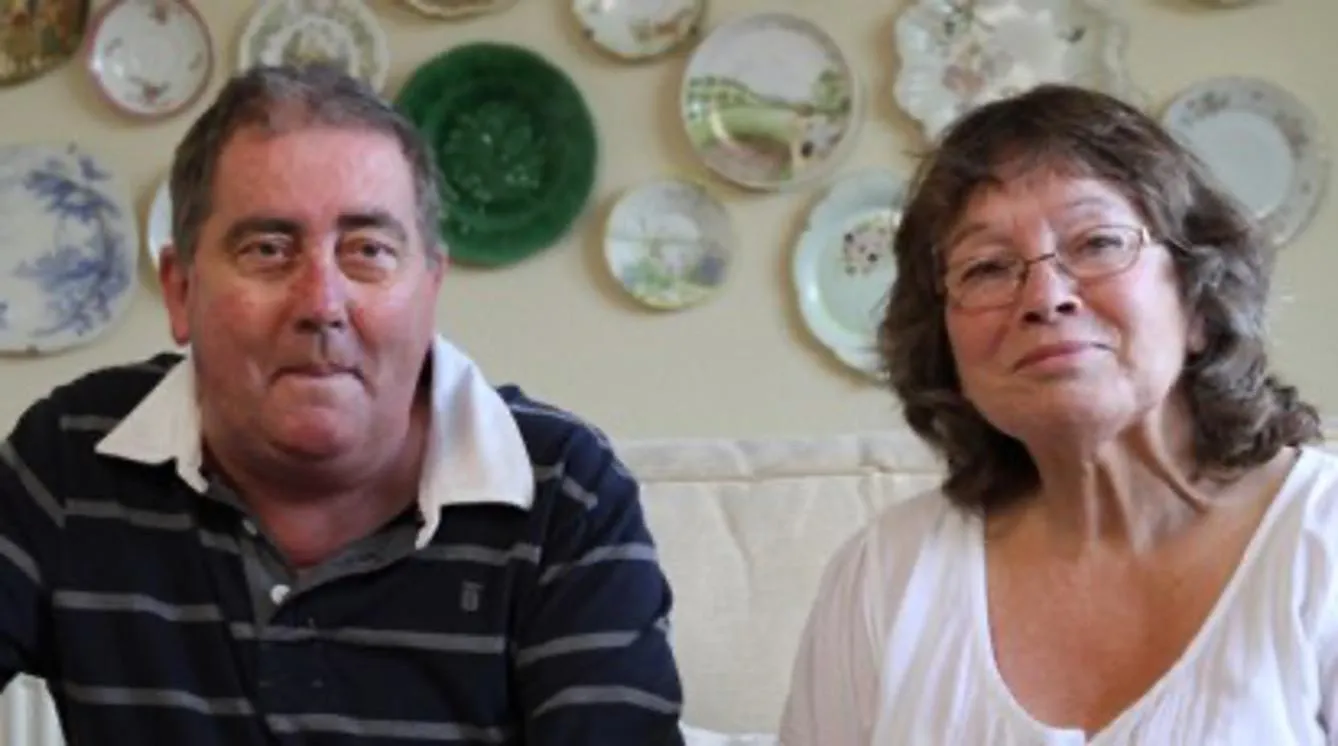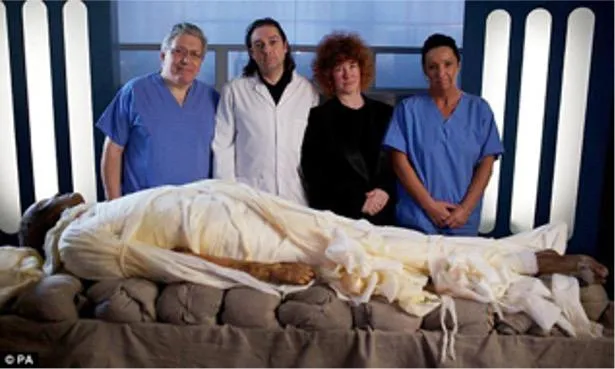
The Gordon Museum holds the mummified body of Mr. Alan Billis who died in 2011. The 61-year-old Torquay resident, who was suffering from lung cancer, decided to donate his body to science when he read in a newspaper that researchers were seeking a terminally ill volunteer to become a mummy.
Mr. Billis was the subject of a Channel Four documentary Mummifying Alan – Egypt’s Last Secret, which was aired in 2011. The programme followed the story of the terminally ill taxi driver who donated his body for use in a project which re-examined the mummification processes of the ancient Egyptians. The documentary went on to be the winner of the 2012 Royal Television Society award in the Science and Natural History category and the 2012 BAFTA award in the Specialist Factual category.
Dr Stephen Buckley, an expert on Egyptian preservation techniques from the University of York, and archaeologist Prof Jo Fletcher were interested in how ancient Egyptians produced mummies and in particular how those from the 18th Dynasty (c. 1550-1292 BC.) were created. Using modern equipment and techniques Buckley and Fletcher analysed the remains of the various waxes, oils and resins used in ancient Egyptians mummification procedures to determine the composition of the materials and with the use of modern imaging technology deducted how the mummification processes was actually performed.

Then using this procedure Pathologist Professor Peter Vanezis and Dr Stephen Buckley carried out the mummification process on Mr Billis’s body, at the Sheffield Medico-Legal Centre. His internal organs, including his lungs and intestines, were removed. His brain though was left in place. The body was drained of fluids, coated in a protective mixture of beeswax and sesame oil, and then soaked in a natron salt bath for more than one month. The body’s moisture was removed by the natron, a caustic salt, a process described by Greek historian Herodotus in 450 BC. Lastly, the body was dried out in a chamber kept at a high temperature and low humidity for three months, and wrapped in linen bandages. Subsequent imaging has shown the process to be completely successful and the body to have very similar characteristics to 18th Dynasty mummies.
The Human Tissue Authority (HTA) who approved the project, proposed to Dr Buckley that the Gordon Museum (licensed under HTA legislation) would be an ideal location for a permanent home for Mr. Billis and with the agreement of the Gordon Museum, Alan Billis’s mummy has become a new addition to the Museum’s collections. Mr. Billis’s mummy will continue to have an educative purpose for Bio-Archaeologists, Archaeological Chemists and Archaeologists generally. In addition, there will be ongoing scientific study and analysis of the mummy.
Images copyright Blink Pictures